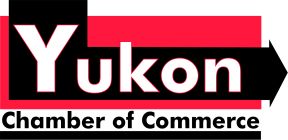 | |  | | | | Endurance Training & Muscle Loss | | 
If you're training for an endurance event like a marathon, where you might run 60 miles or more per week, you'll almost always see a decrease in your muscle mass. For most of us who do more moderate amounts of physical activity, there will be minimal, if any, loss in muscle mass – so there's nothing to worry about. If you are planning on endurance training and you are concerned about losing muscle, it is a good idea to start with 20-30 minutes of moderate aerobic exercise (at 50% to 70% of your maximum heart rate) two to three days per week. From there, increase your aerobic exercise gradually, and include at least two days per week of muscle toning for each major muscle group. While you don't want to bulk your muscles up, keeping them in top condition will boost the muscle's ability to support endurance training. | | | Healthy Eating on the Run: A Month of Tip busy lifestyle. Whether it's carry-out, food court, office cafeteria or sit-down restaurant, there are smart choices everywhere. Here are some tips to help you eat healthy when eating out. You probably eat out a lot—most Americans do. People are looking for fast, easy and good-tasting foods to fit a Boost the nutrition in all types of sandwiches by adding tomato, lettuce, peppers or other vegetables. Split your order. Share an extra large sandwich or main course with a friend or take half home for another meal. Tempted by sweet, creamy desserts? Order one dessert with enough forks for everyone at the table to have a bite. Limit the amount of alcohol you drink. No more than one drink for women and two for men. Alcohol tends to increase your appetite and provides calories without any nutrients. Think about your food choices for the entire day. If you're planning a special restaurant meal in the evening, have a light breakfast and lunch. Hunger can drive you to eat too much bread before your meal arrives. Hold the bread or chips until your meal is served. Out of sight, out of mind. It's OK to make special requests, just keep them simple. For example, ask for a baked potato or side salad in place of French fries; no mayonnaise or bacon on your sandwich; sauces served on the side. Order the regular or child-size portion. Mega-sized servings are probably more than you need. For a lighter meal, order an appetizer in place of a main course. Menu terms that can mean more fat and calories: batter-fried, pan-fried, buttered, creamed, crispy, breaded. Choose these foods only occasional and in small portions. Read restaurant menus carefully for clues to fat and calorie content. Menu terms that can mean less fat and calories: baked, braised, broiled,grilled, poached, roasted, steamed. Take time to look over the menu and make careful selections. Some restaurant menus may have a special section for "healthier" choices. Think ahead and plan where you will eat. Consider what meal options are available. Look for restaurants or carry-out with a wide range of menu items. | | | | | |  | |




 del.icio.us
del.icio.us Digg
Digg reddit
reddit Facebook
Facebook StumbleUpon
StumbleUpon Twitter
Twitter MySpace
MySpace


No comments:
Post a Comment